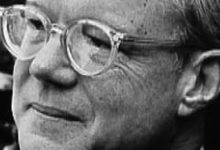“Al-Atjāhāt al-Aslūbiyyah fī al-Naqd al-ʿArabī al-Ḥadīth” (Stylistic Trends in Modern Arabic Criticism) is a seminal work in the field of Arabic literary criticism, authored by the renowned critic and theorist, Dr. Abdulrahman Badawi. Published in 1956, this book has profoundly influenced the discourse on Arabic literature and criticism, offering insightful analyses and categorizations of various stylistic trends prevalent in modern Arabic literary criticism.
Historical Context and Author Background
Dr. Abdulrahman Badawi (1917–2002) was an Egyptian literary critic, scholar, and educator, known for his significant contributions to Arabic literary theory and criticism. He held academic positions at Cairo University and contributed extensively to literary journals and publications throughout his career. Badawi’s scholarship spanned various aspects of Arabic literature, from classical to contemporary, and he played a pivotal role in shaping the critical landscape of Arabic literary studies in the 20th century.
Themes and Contributions
“Stylistic Trends in Modern Arabic Criticism” delves into the diverse approaches and methodologies adopted by Arabic critics in analyzing literature from the late 19th century onward. Badawi categorizes these trends into distinct stylistic orientations, each reflecting a different philosophical and methodological stance towards literary criticism.
-
Historical-Critical Approach: This trend focuses on contextualizing literary works within their historical and cultural milieu. Critics adopting this approach emphasize the importance of understanding the socio-political conditions and intellectual currents that influenced the production of literary texts.
-
Aesthetic Approach: Emphasizing the aesthetic dimensions of literature, this trend prioritizes the analysis of form, style, language, and artistic techniques employed by writers. Critics within this framework explore how literary works achieve aesthetic unity and aesthetic pleasure for the reader.
-
Ideological Approach: This trend examines literature through the lens of ideological frameworks, such as Marxism, feminism, postcolonialism, and existentialism. Critics analyze how literature reflects and shapes ideological discourses within society, offering insights into power relations, identity politics, and socio-cultural critiques.
-
Comparative Approach: Comparative criticism involves juxtaposing Arabic literature with other literary traditions, such as European, Persian, or Indian literatures. Critics employing this approach highlight similarities, influences, and contrasts between different literary traditions, enriching the understanding of cross-cultural literary dynamics.
-
Structuralist and Semiotic Approaches: Drawing on structuralism and semiotics, these trends focus on the underlying structures, systems of signs, and symbolic representations within literary texts. Critics explore how language, narrative structures, and symbols convey meaning and contribute to the overall literary experience.
Methodological Insights and Critical Reception
Badawi’s work not only categorizes these stylistic trends but also provides critical insights into their strengths, limitations, and implications for the study of Arabic literature. He argues for a pluralistic approach to criticism that accommodates multiple perspectives and methodologies, enriching the depth and breadth of literary analysis in the Arabic-speaking world.
The book has been widely praised for its comprehensive scope, rigorous scholarship, and lucid presentation of complex theoretical concepts. It has become essential reading for students, scholars, and practitioners of Arabic literature and criticism, serving as a foundational text that continues to influence research and pedagogy in the field.
Legacy and Influence
“Stylistic Trends in Modern Arabic Criticism” remains a landmark work in Arabic literary criticism, contributing significantly to the theoretical framework and methodological diversity within the discipline. Its categorizations and analyses have inspired subsequent generations of critics to explore new avenues of research and engage critically with both classical and contemporary Arabic literature.
The enduring relevance of Badawi’s insights underscores the book’s enduring legacy as a cornerstone of Arabic literary theory and criticism. By mapping out the stylistic trends and methodological approaches in modern Arabic criticism, Badawi’s work continues to shape scholarly discourse and foster a deeper understanding of the complexities and nuances of Arabic literary expression.
In conclusion, “Stylistic Trends in Modern Arabic Criticism” by Abdulrahman Badawi stands as a seminal text that not only surveys the landscape of Arabic literary criticism but also enriches it with profound methodological insights and critical reflections. Its enduring influence and scholarly rigor ensure its place as a foundational work in the study of Arabic literature and criticism, offering valuable perspectives for ongoing scholarly inquiry and discourse.

